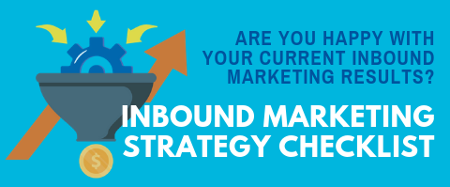If you find it a bit daunting to develop a keyword strategy, you’re not alone! Many people don’t fully understand which keywords they should go after, and they don’t know how to find out. The concept seems simple. We want our website to appear when someone searches for a solution to a problem we can solve. But it can be hard to get started.
 Here are a few simple tips to help you get in the mindset of finding the right keywords.
Here are a few simple tips to help you get in the mindset of finding the right keywords.
1. Start with your target personas in mind.
Think about what problems you solve for them. What are their needs? What are they likely to type into a search bar? The keywords will come naturally.
2. Use long-tail keywords.
Thanks to Google’s release of its Hummingbird algorithm last fall, long-tail keywords have taken center stage. Long-tail keywords are longer phrases that usually consist of three or more words. For example: “how to fix a leaky faucet.” They’re more specifically relevant and tend to have less competition, allowing you to rank higher. Long-tail keywords are also more likely to reflect what your buyer personas are typing into their search bar, giving you not just any visitors, but qualified ones. It’s important to remember that you’re no longer writing for search engines—you’re writing for humans. Search engines want to match your content to what people are searching for.
3. Ask your salespeople for the top questions they typically hear from clients or prospects.
These questions will lend themselves to keywords that are likely to be a great fit.
4. Look for related searches.
When you type a phrase into a search bar, what other similar search phrases automatically populate? These are big hints about what others are searching for. Take note and consider if you should go after any of them. You can do this for each phrase, and also continue the cycle by finding a related one, then plugging that one in to see what populates.
5. Narrow your results.
Using your analytics tools (we use HubSpot), narrow by researching the difficulty and popularity of each phrase. This should help guide your decision.
6. Optimize your site.
To increase your chances of showing up on the first page for those keywords, you’ll want to optimize your site pages with them. This means placing keywords in key locations such as:
- Page Title
- URL
- In the body (naturally, about 5 times)
- In the anchor text (that means link your keyword to something relevant on your website)
- In the meta description (the blurb found after the title in search engine results)
7. Analyze your results on a monthly, quarterly, and yearly basis.
To figure out what’s working and what you should tweak, you’ll want to analyze your keywords and organic traffic. With which keywords are you ranking in the Top 3? How about the Top 10? Are there any opportunities to rank for keywords that you might not be tracking? Minor variations of your current keywords could make a big difference.
Remember, your keyword strategy is important but it doesn’t have to be overwhelming. If you focus on generating great content for your buyer persona’s needs, the keywords should come naturally.



